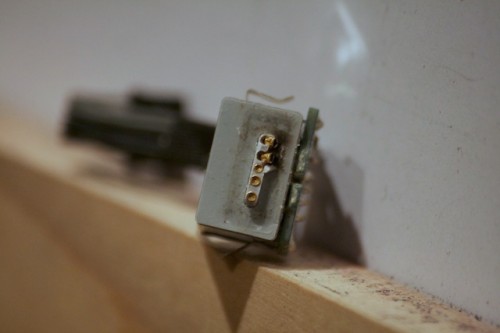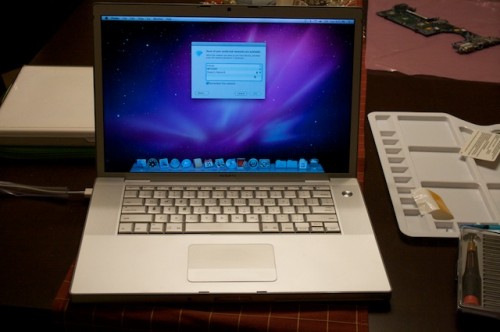I remember my first computer, a little, square, black, magazine sized block called the Timex Sinclair 1000. It was 1982, it sold for $99, it had 2 kb memory (that's right, kilobytes), a quite respectable 3.25 Mhz operating speed, and, this is my favorite part, a resolution of 22 x 32 text characters. It was made by Timex - you know, the watch company ("Takes a lickin' and keeps on tickin'!), and Sinclair - okay, I have no idea what else they made, aside from this. Sporting a flat membrane keyboard, the entire thing was fairly solid with no moving parts. At the time I thought it was the bee's knees. Last year when I was sifting through some storage boxes, I found my cell phone from 1997. Like my buddy the Timex-Sinclair, it also was a black brick with a black and white display. It had a nifty button top walkie-talkie plastic telescoping antenna for better reception. I always suspected it was a technological placebo to make me think I had better reception, because I couldn't quite understand how a completely plastic antenna was picking up anything. Crumpled up next to my 1997 sidekick was a piece of leather origami which sprang into the shape of the phone as I prodded it. Windowed cutouts allowed the screen and keys to poke through. It was perforated with a stylish hole pattern like you would find on the leather wrapped steering wheel of a sports car - you know, to let it breathe. Aside from keeping my plastic brick snug and cozy, it's 0.2 mm of thickness served no other appreciable function. Besides, you could fight off a bear with that phone without denting it.
So, this leads me to last week, when I found myself shopping for two tech accessories: a case for my iPhone, and a case for my snazzy new Macbook Air. The iPhone is the model with the metal sides that form the antenna, and the shiny glass back and front. As anyone knows who grew up holding rabbit ear antennas on TVs to improve the reception, you become part of the equation when you touch the antenna. To avoid you messing up your own cell phone signal, you need a case. Plus, a phone made of glass is somewhat subject to breakage. The MacBook Air, on the other hand, is not made of glass, but instead has a beautiful brushed aluminum unibody shell. Its problem is scratches and dents, and it too needs some loving.
I was thinking about my phone, which, with its 8 GB of flash memory can store the contents of 4 million Timex-Sinclair 1000s, and my 1997 cellphone. 30 years of progress has evolved devices from indestructible bricks with cases for looks to elegant glass and aluminum works of art with cases required to function. There's definitely a side commentary on the trade-offs of art versus form and function.
As I scrolled through endless webpages of iPhone and Mac cases I saw it all: rhinestone encrusted cases, chrome cases, matte black cases with giant alien heads screen printed on them, Hello Kitty cases, glow in the dark cases, and the complete Michael Kors collection of cases on the Apple store. On the other end of the spectrum were rubber encasements suitable for industrial use. Is there no midpoint between bedazzled and basic?
Finally, after all my searching, I came up with something which simultaneously went against and with all of my artistic instincts: clear. My MacBook Air has a nice, thin, clear snap-on case (Moshi iGlaze) which lets me see all of the beautiful brushed aluminum, as does my iPhone. I think the analogy is picking out a frame for your artwork: sometimes it's tempting to pick out a frame to make the art prettier - but maybe letting the art speak on its own is the way to go.



































